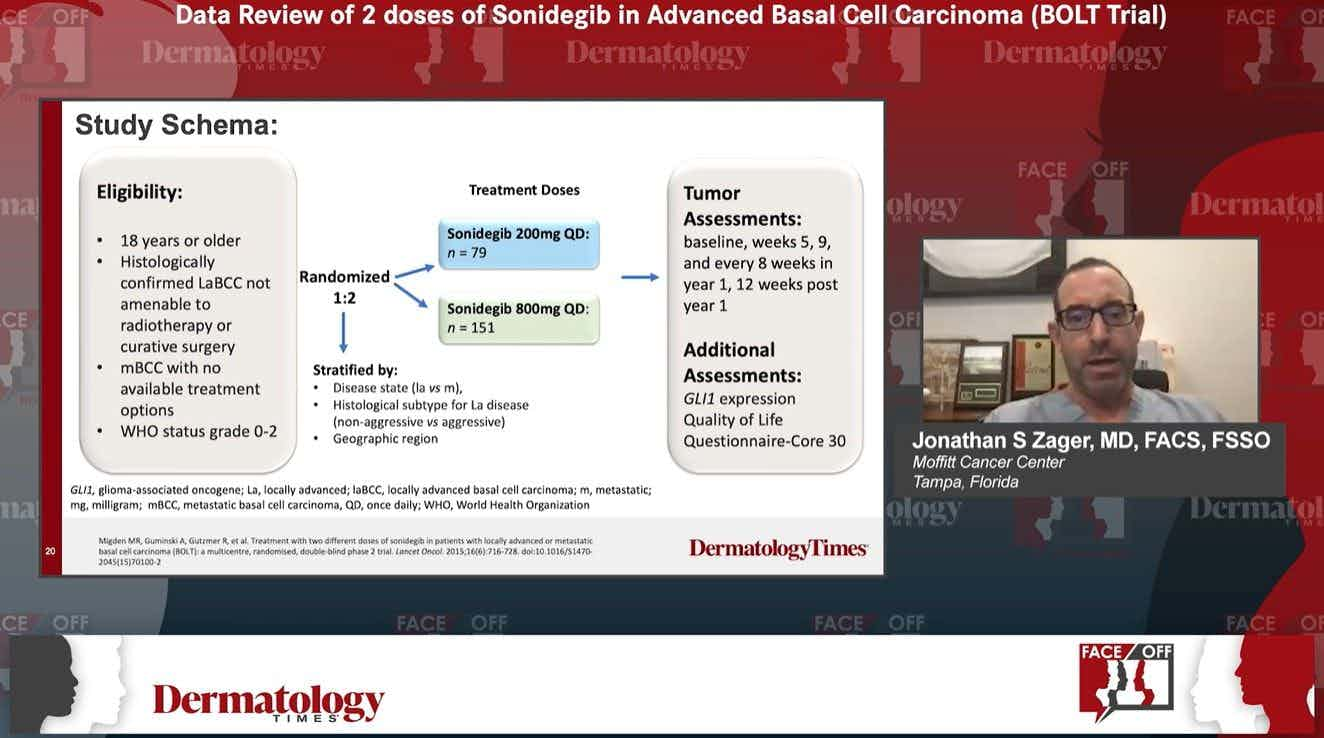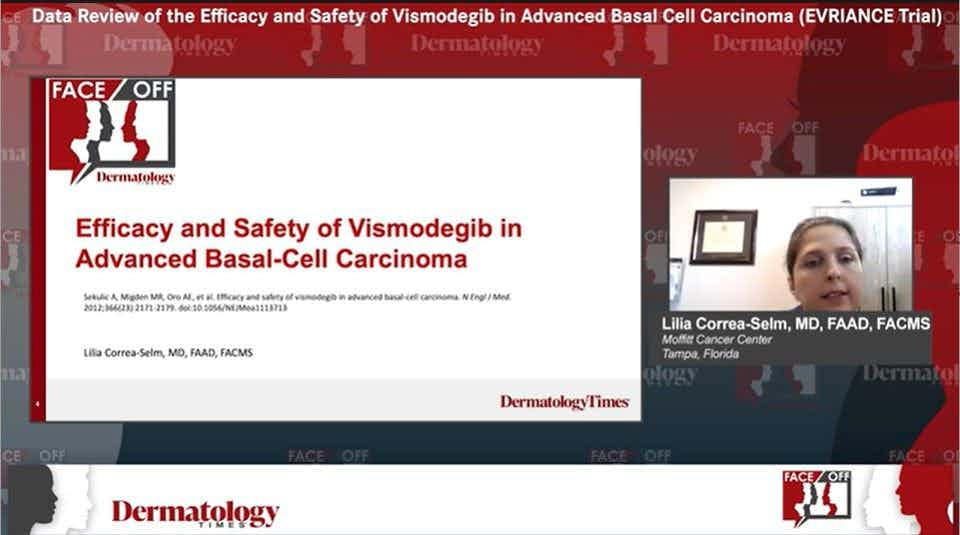- Acne
- Actinic Keratosis
- Aesthetics
- Alopecia
- Atopic Dermatitis
- Buy-and-Bill
- COVID-19
- Case-Based Roundtable
- Chronic Hand Eczema
- Chronic Spontaneous Urticaria
- Drug Watch
- Eczema
- General Dermatology
- Hidradenitis Suppurativa
- Melasma
- NP and PA
- Pediatric Dermatology
- Pigmentary Disorders
- Practice Management
- Precision Medicine and Biologics
- Prurigo Nodularis
- Psoriasis
- Psoriatic Arthritis
- Rare Disease
- Rosacea
- Skin Cancer
- Vitiligo
- Wound Care
Article
Skin Cancer and the Cutaneous Microbiome: Thinking Small May Produce Big Results
Author(s):
The human microbiota and its involvement in human health and disease has been emphasized in recent years. Now, researchers have begun to explore whether a patient’s unique microbiota may influence skin cancer risk and response to therapy.
Skin cancer is one of the most common diagnoses seen in dermatological practice and its global prevalence continues to increase.1 Ultraviolet radiation is well-established as a major risk factor in the development of skin cancer, but other risk factors may be influential. Given that the cancer microenvironment—which denotes non-cancerous cells—within the tumor environment is recognized to modulate cancer progression and treatment response, recent research has begun to investigate the cancer microenvironment in cutaneous malignancy.2 One of these cancer microenvironments that has sparked interest is the human microbiota. The human body is colonized by a large number of microbes, jointly referred to as the human microbiota. The connection between these microbes and our health is the focus of a growing number of research initiatives, especially in dermatology. In fact, a recent review paper summarized existing research on the gut microbiome composition and function in psoriasis and psoriatic arthritis, exploring potential roles in disease pathogenesis, progression, and management.3
“This review highlights potentially important associations between the skin and gut microbiome and skin cancer,” said Wilson Liao, MD, a board-certified dermatologist, professor of dermatology and co-director of the Psoriasis and Skin Treatment Center at The University of California, San Francisco. “The microbiome is well-known to influence inflammatory skin diseases such as atopic dermatitis, psoriasis, and hidradenitis suppurativa.”
Given the recent emphasis on human microbiota and its involvement in human health and disease, researchers have begun to explore whether a patient’s unique microbiota may influence skin cancer risk and response to therapy. Unfortunately, not much is known about the influence of the human microbiota on skin cancer.
Given that more research is needed on this topic, Woo et. al conducted a review on the human skin microbiota that is most closely associated with skin cancer and highlighted mechanism of action and therapeutic potential.4 First, the authors discuss the link between the cutaneous microbiome and specific skin and skin-related malignancies.
Evidence was presented on the association between Staphylococcus aureus (S aureus) and squamous cell carcinoma (SCC), and a study was introduced by Kullander et. al which found that the colonization of S aureus was higher in SCC biopsies (29.3%) than healthy skin biopsies (5.7%).5 These same authors found a higher prevalence of S aureus DNA in actinic keratoses and SCC of the skin by using polymerase chain reaction. Given that actinic keratoses are well-known pre-cursor lesions to cutaneous SCC, it is hypothesized that the bacteria may aid in malignant transformation. Despite observations of S aureus in SCCs, there is no evidence on the causal association between the 2.
Various studies have also linked S aureus and Cutaneous T-cell lymphoma (CTCL). The colonization of S aureus was found to be heaviest in erythrodermic Sezary syndrome while scant in mycosis fungoides without erythroderma.2,5 Another finding on this topic found that 58% of CTCL patients had clinical improvement with a 4 week antibiotic course against S aureus and 8 patients with treatment resistant CTCL disease achieved improvement with a similar antibiotic regimen.6,7 Antibiotics have also been shown to modulate patterns of mRNA expression in CTCL, causing these signals to become more similar to those found in normal skin. The cytokine IL-2 was inhibited after treatment with antibiotics, along with STAT3 activation.6 Other types of bacteria that have been implicated in CTCL are β-hemolytic streptococci, Enterobacteriaceae, Pseudomonas aeruginosa, and Enterococcus species.8
Despite these interesting results, more large scale and randomized controlled trials with antibiotic treatments are needed to better determine how these bacteria are associated with the pathogenesis or clinical response in CTCL. Many studies on the skin microbiome and CTCL are limited by the fact that it has only when studied in a small amount of patients.
Several studies on the protective and detrimental effects of specific bacteria on malignant melanoma (MM) were discussed such as Corynebacterium, S. epidermidis, Fusobacterium, and Trueprella. One study found that Corynebacterium is more strongly associated with stage 3/4 MM patients, and in a mouse model, this bacteria was found to up-regulate IL-17 cells.9-11 Since IL-17 can induce the growth of melanoma, these findings may suggest that Corynebacterium might promote growth of MM through an IL-17 dependent pathway. There are studies which show that S. epidermidis both promotes and inhibits the growth of MM. Nakatsuji et al found that intravenous injection of 6-HAP (derived from S. epidermidis) can inhibit the growth of the B16F10 melanoma cell line and Wang et. al suggested that S. epidermidis can enhance its survival by upregulating TRAF1, CASP14, CASP5, and TP73 during UVB irradiation.12,13
In the review, the authors propose a mechanistic link between the skin microbiota and skin cancer and consider key factors such as the cutaneous immune system, microbial metabolites on the skin, barrier disruption, UV radiation, and the intratumoral microbiota. Their main hypothesis was that all of these separate factors are synergistic in allowing for tumor progression through immunosuppression, cellular proliferation, and inflammation in the cutaneous microenvironment.4
Given these various factors, suggestions for therapeutic interventions are reviewed by the authors and data was presented on the role of prebiotics and probiotics in other dermatological diseases. For example, topical application of Roseomonas mucosa leads to a clinical improvement in atopic dermatitis.14 Similarly, there is evidence to show that topical application with enterocins from Enterococcus Faecalis SL-5 improved acne over an 8-week course.
While no study has tested the effect of topical probiotics on skin cancer, the mechanism of action of topical probiotics may modulate the cutaneous microenvironment and may lead to tumor suppression. The authors concluded that recent research into the role of skin microbiota has contributed to our understanding of the pathogenesis of skin cancer, but additional studies are needed to further elucidate its exact role in skin cancer.4
“It is exciting that these findings are now being extended to skin cancer, which has significant morbidity for our patients,” Liao said.
References:
- Christenson LJ, Borrowman TA, Vachon CM, et al. Incidence of basal cell and squamous cell carcinomas in a population younger than 40 years. JAMA. 2005;294(6):681-690. doi:10.1001/jama.294.6.681
- Woo YR, Cho SH, Lee JD, Kim HS. The Human Microbiota and Skin Cancer. Int J Mol Sci. 2022;23(3):1813. doi:10.3390/ijms23031813
- Myers B, Brownstone N, Reddy V, et al. The gut microbiome in psoriasis and psoriatic arthritis. Best Pract Res Clin Rheumatol. 2019;33(6):101494. doi:10.1016/j.berh.2020.101494
- Woo YR, Cho SH, Lee JD, Kim HS. The human microbiota and skin cancer. IJMS. 2022;23(3):1813.
- Kullander J, Forslund O, Dillner J. Staphylococcus aureus and squamous cell carcinoma of the skin. Cancer Epidemiol Biomarkers Prev. 2009;18(2):472-478. doi:10.1158/1055-9965.EPI-08-0905
- Talpur R, Bassett R, Duvic M. Prevalence and treatment of Staphylococcus aureus colonization in patients with mycosis fungoides and Sézary syndrome. Br J Dermatol. 2008;159(1):105-112. doi:10.1111/j.1365-2133.2008.08612.x
- Lindahl LM, Willerslev-Olsen A, Gjerdrum LMR, et al. Antibiotics inhibit tumor and disease activity in cutaneous T-cell lymphoma. Blood. 2019;134(13):1072-1083. doi:10.1182/blood.2018888107
- Axelrod PI, Lorber B, Vonderheid EC. Infections complicating mycosis fungoides and Sézary syndrome. JAMA. 1992;267(10):1354-1358.
- Mizuhashi S, Kajihara I, Sawamura S, et al. Skin microbiome in acral melanoma: Corynebacterium is associated with advanced melanoma. J Dermatol. 2021;48(1):e15-e16. doi:10.1111/1346-8138.15633
- Ridaura VK, Bouladoux N, Claesen J, et al. Contextual control of skin immunity and inflammation by Corynebacterium. J Exp Med. 2018;215(3):785-799. doi:10.1084/jem.20171079
- Wang L, Yi T, Kortylewski M, Pardoll DM, Zeng D, Yu H. IL-17 can promote tumor growth through an IL-6-Stat3 signaling pathway. J Exp Med. 2009;206(7):1457-1464. doi:10.1084/jem.20090207
- Wang Z, Choi JE, Wu CC, Di Nardo A. Skin commensal bacteria Staphylococcus epidermidis promote survival of melanocytes bearing UVB-induced DNA damage, while bacteria Propionibacterium acnes inhibit survival of melanocytes by increasing apoptosis. Photodermatol Photoimmunol Photomed. 2018;34(6):405-414. doi:10.1111/phpp.12411
- Nakatsuji T, Chen TH, Butcher AM, et al. A commensal strain of Staphylococcus epidermidis protects against skin neoplasia. Sci Adv. 2018;4(2):eaao4502. doi:10.1126/sciadv.aao4502
- Myles IA, Earland NJ, Anderson ED, et al. First-in-human topical microbiome transplantation with Roseomonas mucosa for atopic dermatitis. JCI Insight. 2018;3(9):120608. doi:10.1172/jci.insight.120608
Newsletter
Like what you’re reading? Subscribe to Dermatology Times for weekly updates on therapies, innovations, and real-world practice tips.















